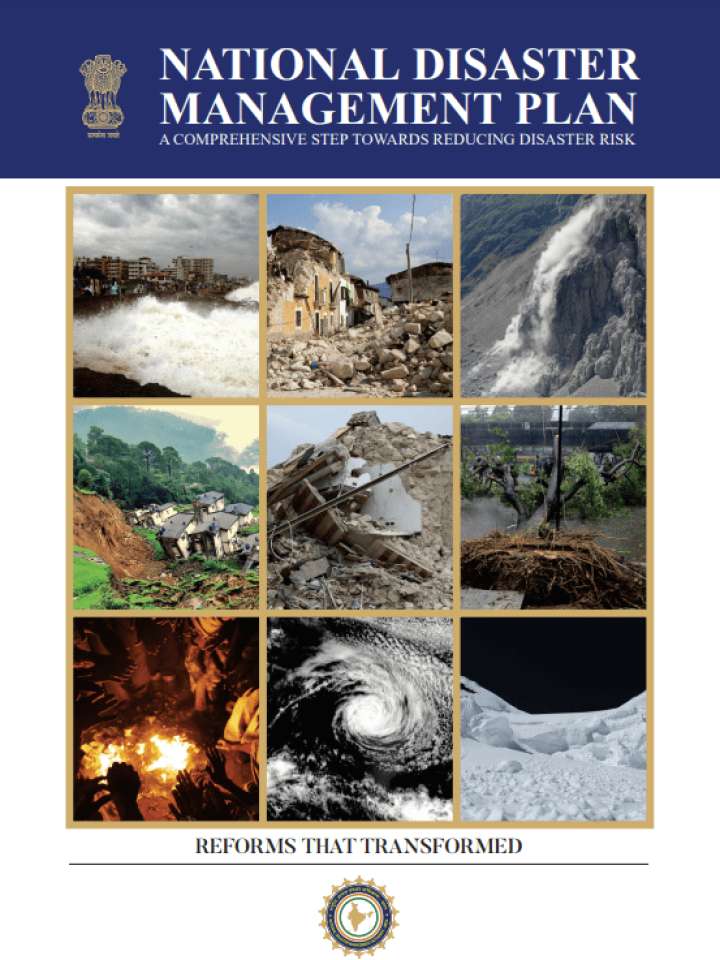National disaster management plan: A comprehensive step towards reducing disaster risk
This report is the comprehensive and progressive National Disaster Management Plan of India, which has enabled better planning and risk reduction at all levels. India—a country vulnerable to disasters: India is one of the most disaster-prone countries in the world. Due to its geo-climatic and socio-economic conditions, the country is prone to all kinds of disasters, such as floods, earthquakes, tsunamis, landslides, cyclones, droughts, thunderstorms and lightning strikes, glacial lake outburst flood (GLOFs), heat waves, biological and public health emergencies, fires (including forest fires), etc. Hence, a national plan for disaster management is of prime importance for disaster risk reduction in India. Section 11 of the Disaster Management (DM) Act 2005 mandates a national plan for disaster management for the whole country. While NDMA had earlier issued hazard-specific guidelines, there wasn't a national plan which tied them together.
Bringing a effcted people/stakeholders into the fold—issues and challenges: The absence of a national plan to guide disaster management planning at all levels was affecting the people of the country and impeding work for the stakeholders involved in disaster management. It created the following issues/challenges:
- Vulnerable sections of the population, particularly, elderly persons, women, children, economically weaker sections and persons with disabilities are more affected than others in any disaster. Focusing on vulnerable groups in the absence of an inclusive national plan was a challenge.
- Managing a disaster calls for multi-stakeholder involvement, including participation of the government and non-government sectors. But without a national plan, there could neither be any clarity on the roles and responsibilities of the stakeholders nor any coordinated eort for disaster management on their part.
- Stakeholders, like Central ministries/departments, states, NGOs, academic and research institutions, business corporations, media, etc., had no information as to their roles and responsibilities in the implementation of risk reduction activities in any given time frame.
Explore further
